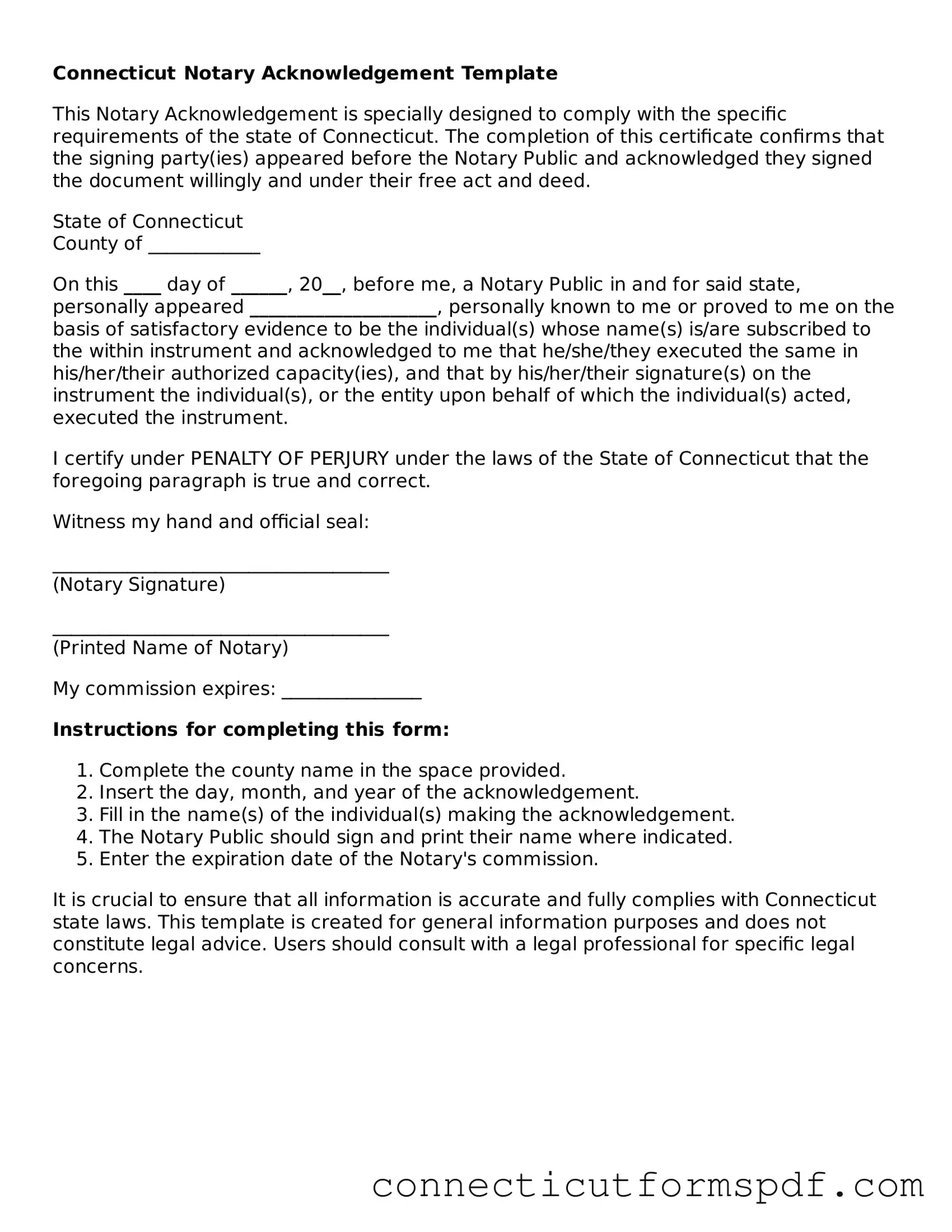Connecticut Notary Acknowledgement Template
This Notary Acknowledgement is specially designed to comply with the specific requirements of the state of Connecticut. The completion of this certificate confirms that the signing party(ies) appeared before the Notary Public and acknowledged they signed the document willingly and under their free act and deed.
State of Connecticut
County of ____________
On this ____ day of ______, 20__, before me, a Notary Public in and for said state, personally appeared ____________________, personally known to me or proved to me on the basis of satisfactory evidence to be the individual(s) whose name(s) is/are subscribed to the within instrument and acknowledged to me that he/she/they executed the same in his/her/their authorized capacity(ies), and that by his/her/their signature(s) on the instrument the individual(s), or the entity upon behalf of which the individual(s) acted, executed the instrument.
I certify under PENALTY OF PERJURY under the laws of the State of Connecticut that the foregoing paragraph is true and correct.
Witness my hand and official seal:
____________________________________
(Notary Signature)
____________________________________
(Printed Name of Notary)
My commission expires: _______________
Instructions for completing this form:
- Complete the county name in the space provided.
- Insert the day, month, and year of the acknowledgement.
- Fill in the name(s) of the individual(s) making the acknowledgement.
- The Notary Public should sign and print their name where indicated.
- Enter the expiration date of the Notary's commission.
It is crucial to ensure that all information is accurate and fully complies with Connecticut state laws. This template is created for general information purposes and does not constitute legal advice. Users should consult with a legal professional for specific legal concerns.
